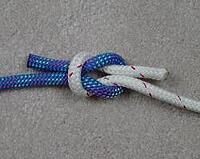Reconcile credit card accounts in Sage 300 (ACCPAC) and Sage Pro
Some accounting systems and ERP systems such as QuickBooks Pro have built in support for...

If you have ever run Sage Pro Series (or any batch oriented accounting system) for a few periods, you may get the question from someone: "Why don't the figures in the balance sheets match the figures in the sub ledgers". (Sub ledgers are the subsidiary ledgers, e.g. Accounts Receivable, Payable, etc.)
Goal of this Posting
This posting describes the ways the subsidiary ledgers in Sage Pro can be tied to the general ledger. This means checking the internal balances in the subsidiary ledgers and then comparing them to the figures in the balance sheet. If the figures match, they “tie”. If the internal balances do not tie, then some kind of problem has occurred. Usually the problem is miscoded account numbers in the subsidiary ledgers, but it could also be some kind of system problem, e.g. a batch that got corrupted, a programming error, or a database error. There are actually a few more balance sheet figures for which you can run sub ledger reports to tie out to balance sheet figures, therefore, this is not an exhaustive list.
Explanation of how Sage Pro's subsidiary ledgers “communicate” to the General Ledger
As transactions are posted in the subsidiary ledgers (AR, AP, SO, PO, IC, PR), a running total is maintained in a “batch” file. For Sage Pro, only the batch totals for each account are present, and if the totals are all 0.0 nothing is present. When the user performs the “release to general ledger” function the batches are moved over to the general ledger’s input area. When the general ledger updates from linked programs, the batches are applied to the general ledger balance accounts (balance sheet and income and expense). Before trying to tie the accounts, be sure that all the batches have been released and updated into the balance sheet.
You have to start somewhere
If the sub ledgers are not tied to the balance sheet in the first place, (for example, when the system was installed initially), they will only tie later by accident or by a "forced" entry in GL. So, it is important that the sub ledgers are tied at some definite point in time and that a note be made of when the sub ledgers matched. That way, you can work backwards to that point to find any error that may have caused the GL and the sub ledgers to become untied. How to find these errors will be the subject of a future blog posting.
Cash – This is the figure in system checking. If you have multiple checking accounts maintained by Sage Pro, then you need to tie all the checking accounts to separate balance sheet cash accounts. To do this, go into AP, Bank Reconciliation and note down what the “Book balance” is. This number should match the corresponding figure on the balance sheet for each checking account. When doing the bank reconciliation, be sure to bring in the entries from all sources, AR, AP, and PR.
Open Invoices - To check the accounts payable figure, print out the open payables aging report. The figure will be the total of all invoices Sage Pro has in the system and their balances remaining to be paid. This figure should be checked against the balance sheet payables figure. Some companies have more than one control account. For example normal payables are charged against 20010 and credit card against 20040. In this case the sum of the two accounts should match the aging report.
Accounts Receivable - Check the open receivables aging report total against the balance sheet AR figure.
Check the sales tax liability balance sheet account against sales tax charged since the last return ended for which a payment was made.
Inventory – Check the inventory on hand total against the inventory figure from the balance sheet.
Sales Orders - Nothing ties to the balance sheet from Sales orders.
Purchase Orders - Uninvoiced PO Receipts directly correspond to PO clearing. The totals from the AP "Uninvoiced PO Receipt report" should match the balance sheet figure. Sage Pro series uses this account to store the liability that is created when Purchase orders are received, but the corresponding AP invoice has not yet been received.
Payroll - In payroll, if the tax deposit report says there is no liability for a given tax code (e.g. FWT), then the corresponding balance sheet account should also be 0. The tax deposit liability can be handled neatly at the end of every month by creating a payable for the EFT amount that is transferred to the IRS.
As always, if you need help with this process, please call us at the number above or send us an email.
Chicago area ERP consultant and Managed Service Provider with over 45 years of experience in Sage 300, Sage Pro, Quickbooks ERP and other systems
Some accounting systems and ERP systems such as QuickBooks Pro have built in support for...
Sage 300 (formerly known as Accpac Advantage) has lots of features that make bank reconciliation...